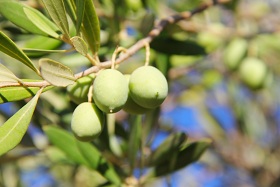Farmers 1 – fruit flies 0

Related topics
Agriculture & Forestry Innovation SMEs Innovation in SMEs Austria Cyprus Spain United Kingdom Food security, sustainable agriculture and forestry, maritime and martime inland water research and bio-economy Norwaydate: 08/07/2014
Project: Development of an innovative automated a...
acronym: E-FLYWATCH
See also: CORDIS
Contact: Contact
Most farmers in at-risk regions monitor regularly for any signs of a fruit fly invasion – monitoring means that they do not spray crops with pricey pesticides unnecessarily. But monitoring – like spraying – cost time and money.
Giving eyes to farmers
Monitoring typically involves small traps that lure the flies with specially created pheromones – an odourless substance to which they are naturally attracted. The farmer must visit the traps regularly, to see whether flies have been caught. As traps can be scattered across vast, remote landscapes, this takes time.
The farmer must then be able to identify any trapped flies, which is no mean feat in itself, according to project coordinator Panayiotis Philimis, who was, at the time the project was carried out (it ended in 2013), technical director of the CNE Technology Centre in Cyprus. For one of the project’s target flies, just the tip of the wings distinguishes them from other species.
Not all fruit flies are equal; e-FlyWatch focused on two of the most destructive – the Mediterranean fruit fly (Ceratitis Caitata, and also known as the ‘medfly’), and the Olive fruit fly (Bactrocera oleae, formerly known as Dacus oleae).
The e-FlyWatch approach was to “give eyes to farmers,” explains Dr Philimis. A combination of miniature cameras, sophisticated algorithms and alert messages lets individual farmers know if the flies are in the area so that they may go and spray their crops when risk is imminent.
“We kept the philosophy of a conventional trap – it works and is familiar to farmers, who don’t like to take risks,” explains Philimis. The existing device, known as the McPhail trap, had nonetheless to be adapted to make space for a mini camera and other electronics.
Trapped and snapped
As the fly enters the trap, a sensor activates a camera and a series of images is captured. Unique image analysis algorithms identify features like size, colour or shape, and are then able to ascertain – with a high level of accuracy – whether or not the captive belongs to the target species. The data are transferred to an internet database via general mobile radio service (GPRS).
The farmer receives an alert in the form of e-mail, text message (SMS) or fax, and can choose the frequency of these alerts – some may find a daily update useful, while others may prefer an alert when the number of trapped flies passes a certain figure.
Trials in Cyprus and Spain proved very effective, and farmers have been “amazed” by the technology, says Philimis.
All the farmer has to do is put the traps in place roughly every 500 metres and give each one a name or number so that he or she knows which traps have caught flies. They may only need to spray a section of their land.
Each trap has an expected lifetime of around seven years, and the electronic components are designed to be easy to replace after this time. And whereas the pheromones used to attract the flies used to last just two to three weeks, a new paste developed within eFlyWatch lasts two to three months. As most farmers will want to use the traps for 4-6 months, this just means 1-2 visits per season.
“This is really a revolution,” says Philimis, “not just the product, but the fact that insects behave in the same way as around conventional traps, and that the system is fully automated.”
The technology could be adjusted to catch other species of fruit flies, so the potential market worldwide is enormous.
Two of the project partners, both small to medium-sized enterprises, are currently looking into commercialising the traps, which they hope to put on the market for €350 each. As far simpler traps are currently on the market for €700-800, this is a very good value, says Dr Philimis, adding that a grower investing in e-FlyWatch traps could expect to a return on investment in under two years.
